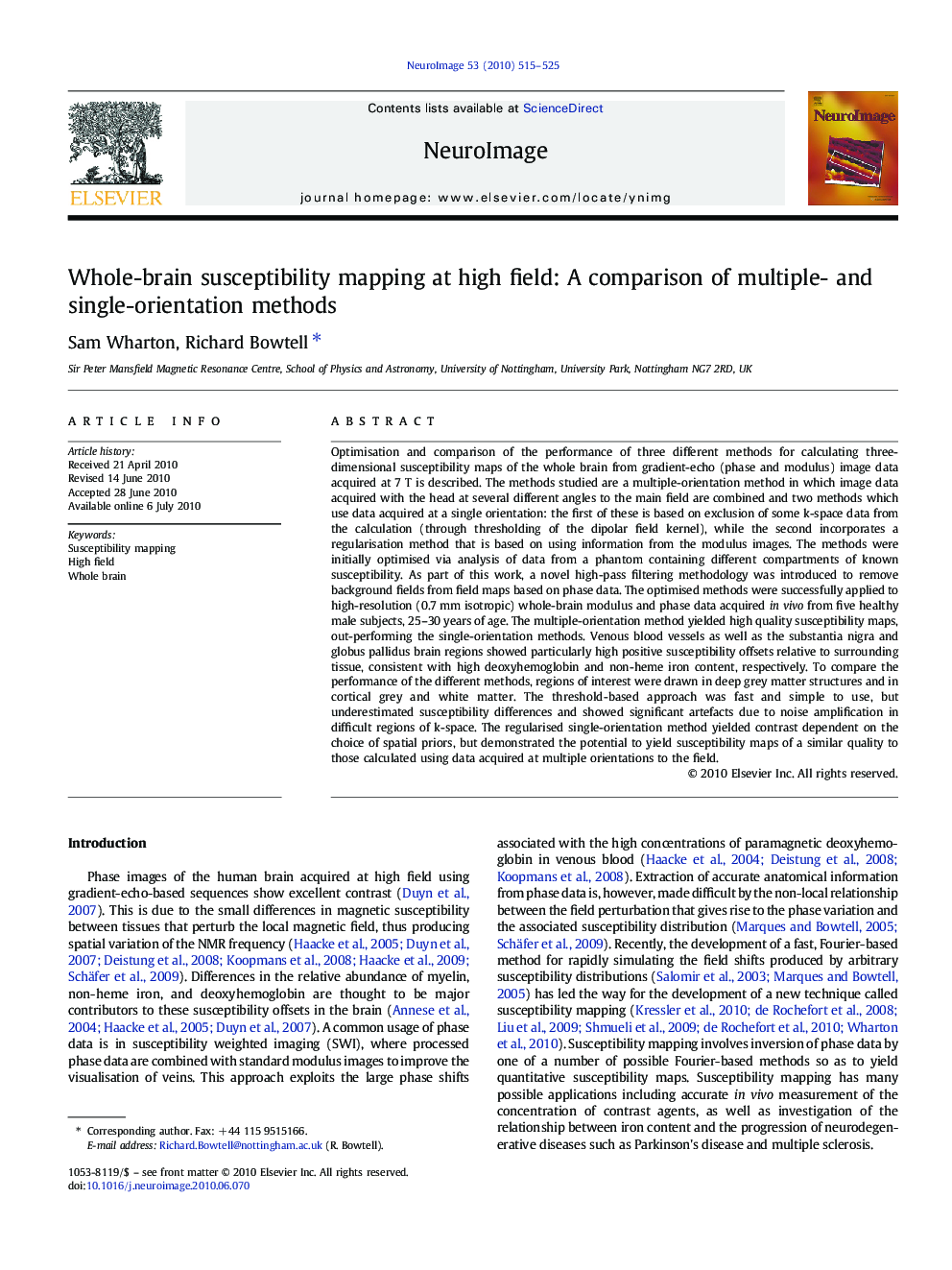| کد مقاله | کد نشریه | سال انتشار | مقاله انگلیسی | نسخه تمام متن |
|---|---|---|---|---|
| 3072267 | 1188769 | 2010 | 11 صفحه PDF | دانلود رایگان |

Optimisation and comparison of the performance of three different methods for calculating three-dimensional susceptibility maps of the whole brain from gradient-echo (phase and modulus) image data acquired at 7 T is described. The methods studied are a multiple-orientation method in which image data acquired with the head at several different angles to the main field are combined and two methods which use data acquired at a single orientation: the first of these is based on exclusion of some k-space data from the calculation (through thresholding of the dipolar field kernel), while the second incorporates a regularisation method that is based on using information from the modulus images. The methods were initially optimised via analysis of data from a phantom containing different compartments of known susceptibility. As part of this work, a novel high-pass filtering methodology was introduced to remove background fields from field maps based on phase data. The optimised methods were successfully applied to high-resolution (0.7 mm isotropic) whole-brain modulus and phase data acquired in vivo from five healthy male subjects, 25–30 years of age. The multiple-orientation method yielded high quality susceptibility maps, out-performing the single-orientation methods. Venous blood vessels as well as the substantia nigra and globus pallidus brain regions showed particularly high positive susceptibility offsets relative to surrounding tissue, consistent with high deoxyhemoglobin and non-heme iron content, respectively. To compare the performance of the different methods, regions of interest were drawn in deep grey matter structures and in cortical grey and white matter. The threshold-based approach was fast and simple to use, but underestimated susceptibility differences and showed significant artefacts due to noise amplification in difficult regions of k-space. The regularised single-orientation method yielded contrast dependent on the choice of spatial priors, but demonstrated the potential to yield susceptibility maps of a similar quality to those calculated using data acquired at multiple orientations to the field.
Research highlights
► A multiple-orientation method and two single-orientation methods are compared.
► Whole-brain susceptibility maps were successfully created at 7 T using each method.
► The multiple-orientation method out-performed the single-orientation methods.
► The regularised single-orientation method yielded accurate bulk values.
► The threshold-based single-orientation method slightly underestimated values.
Journal: NeuroImage - Volume 53, Issue 2, 1 November 2010, Pages 515–525